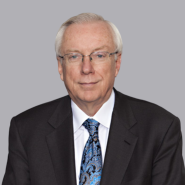Listing the Medical Device Part of a Combination Product in the Orange Book May Trigger Antitrust Liability
- March 30, 2020
- Article
Associated People
Associated Technologies
A patent listing in the Orange Book provides the innovator drug company with a potent tool for excluding generic competitors who wish an ANDA application or 505(b)(2) drug approval applications relying upon the innovator’s efficacy and safety data. If a patent is listed in the Orange Book the generic applicant must provide notice to the NDA holder and the patentee (if different) of the application’s filing. The patentee then has 45 days to initiate litigation which would cause a 30-month stay of the FDA approval of the generic drug. Normally patents to a drug’s packaging are not listable in the Orange Book, however, an exception exists for packaging which also functions as the drug’s applicator. Sanofi took advantage of this provision to list U.S.P. 8,556,864 (‘864 patent) which was directed to the drive mechanism used in its injector pen for its Lantus® insulin product. The product plus injector was sold as Lantus Solostar®.
In an antitrust suit, purchasers of Lantus Solostar® alleged that Sanofi’s listing of the of the ‘864 patent in the Orange Book and Sanofi’s successful use of the 30-month stay and litigation to force competitors to take royalty-bearing license was an antitrust violation. Without the listing of the ‘864 patent in the Orange Book Sanofi’s would not have been able to restrain competition for as long as it did. The district court dismissed the complaint. An appeal followed, In Re: Lantus Direct Purchaser Antitrust Litigation, Appeal 18-2086 (1st Cir. 2020).
The Court analyzed both the patent listing provisions, 21 U.S.C. § 355(b)(1), 21 C.F.R. § 314.53 (c)(2)(i) (M) – (O), and the FDA Guidance on patents that may be listed in the Orange Book. The Court noted that the statutory provisions and rules provided only for listing of patents claiming a drug or its method use. The Court recognized that the FDA’s guidance broadened the patents that could be listed to include:
‘list[ing] current dosage forms for approved drug products,’ including ‘metered aerosols, capsules, metered sprays, gels, and pre-filled drug delivery systems.’ 68 Fed. Reg. at 36,680. Indeed, a ‘Frequently Asked Questions’ page on the FDA website actually lists an ‘insulin injector pen’ as an example of a ‘[p]refilled drug delivery system [].’(slip op. at 13)
The Court then reviewed the patent claims and found that the ‘864 patent should not have been listed since it not only did not claim the drug, it didn’t even claim the injector pen, it claimed a mechanism for use in injector pens. That is, even under the FDA’s Guidance the ‘864 patent was not listable since it was directed to only the injection mechanism. The Court then sent the case back to the district court for further proceedings.
Those seeking to list patents to the device portion of a combination product should make sure that the claims are directed to a drug delivery system and not simply to a portion thereof. Combination products offer innovator drug companies an opportunity to lawfully extend their exclusive period, they must take care that the claims are to a complete drug delivery system to avoid possible antitrust allegations. Those prosecution applications to devices intended as drug delivery systems must include at least some claims to the complete device and preferably some that at least claim the system plus a drug.
Recent Publications
5 IP Rules to Know to Protect Your Business in the United States (article in French)
Coaching INPI Newsletter










 Counseling & Strategic Advice
Counseling & Strategic Advice IP Transactions
IP Transactions Litigation
Litigation PTAB Proceedings
PTAB Proceedings Start-Up
Start-Up Technology Transfer
Technology Transfer Trademark & Designs
Trademark & Designs U.S. Patent Procurement (Application Drafting & Prosecution)
U.S. Patent Procurement (Application Drafting & Prosecution)








